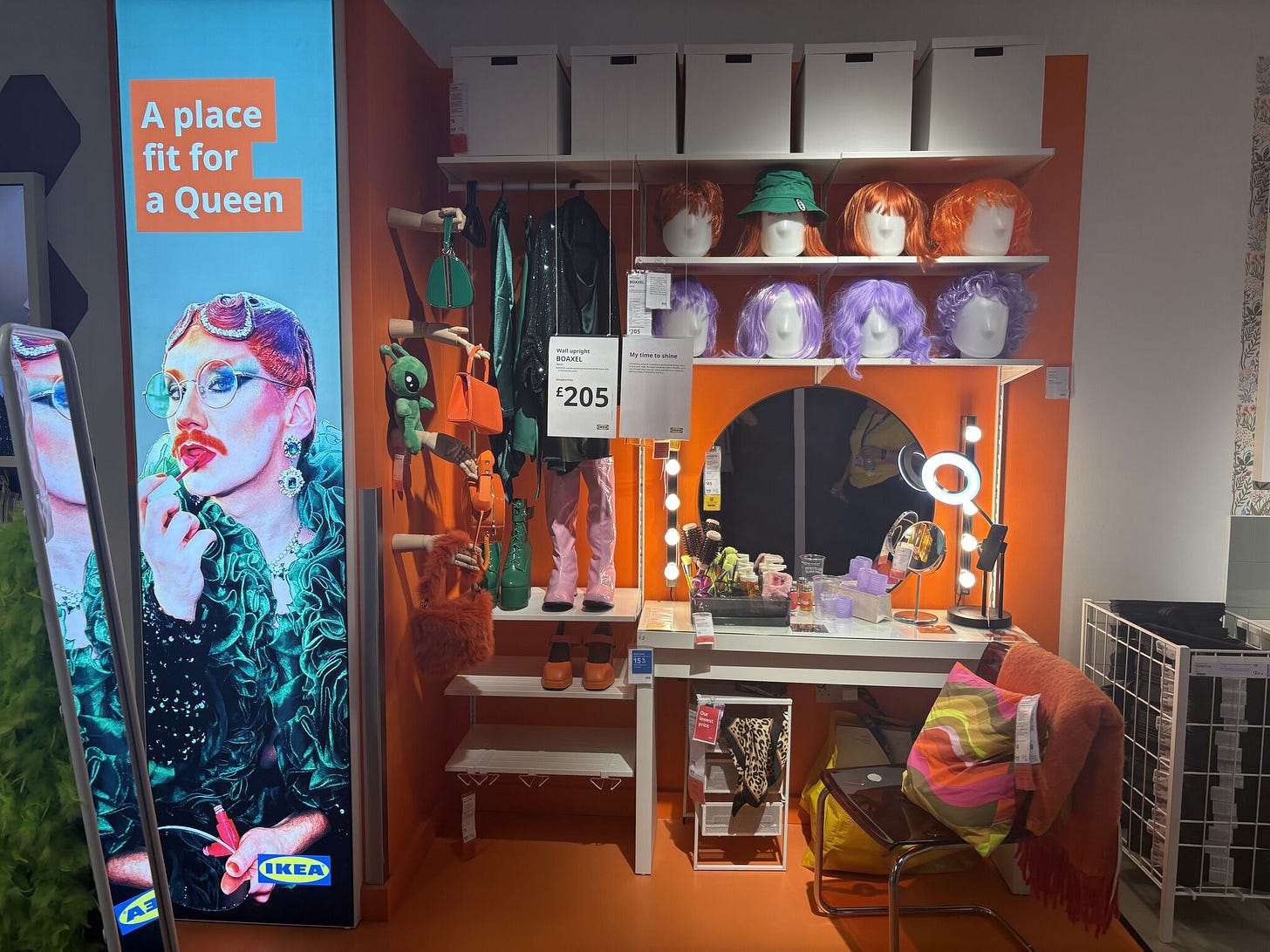IKEA Oxford Street: The flagship that isn’t a flagship
Marketing and selling aren’t mutually exclusive in physical retail. And the new IKEA flagship reminded me of that perfectly.
The IKEA flagship on Oxford Street has just opened, and it’s no exaggeration to say that it’s one of the most hyped and most important new store openings in the world.
And as I walked in on opening day, my initial response was mixed.
I spend a lot of my life visiting new, hyped flagship stores. And that habit has shaped my expectations.
I’ve come to expect big, bold, unique, PR-grabbing stunts. I expect giant sculptures and immersive exhibitions. I expect rooms packed floor to ceiling with old products or foam balls. I expect slides, champagne, DJs, influencers - and most importantly, I expect the unexpected.
And the first thing I saw as I entered this vital flagship - this monumental cultural moment - was a huge stack of scented candles selling for 50p each.
This reflected my experience of the entire store, with the exception of a few notable concepts. This was an IKEA store in every sense.
12,000 SKUs. Meatballs. One way in and one way out.
But as I settled in, I suddenly felt like this might just be one of the best flagships I’ve ever been to - and here’s why…
The flaw in the idea of unique flagships
As much as I enjoy experimental and experience-led flagships and concept stores, I think there’s a real flaw in the very idea of them.
Essentially, any established brand doing something very different with one new store has to also deal with a subsequent question: what’s wrong with your regular stores?
It’s a very common, and very reasonable question.
Instead, shouldn’t a retailer strive to make all their stores special?
It brings into focus a much bigger conversation and tension happening in retail at the moment around marketing vs selling.
Retailers, rightly, are starting to respect the role physical stores can play in marketing, and in driving customer acquisition and sales online.
In doing so, some brands seem to end up with spaces that do marketing, and others that sell.
But in truth, marketing and selling aren’t mutually exclusive in physical retail. And the new IKEA flagship reminded me of that perfectly.
For IKEA, selling is marketing
IKEA is, if you’ll excuse the pun, part of the furniture of British life and culture.
From blue bags in attics to tumblers in restaurants, kids’ party plates to office desks, it’s hard to imagine British life without IKEA.
And in the new flagship, you could feel an awareness and understanding of this - and therefore, the confidence to not have to reinvent or reimagine anything. This was a celebration of that familiarity, rather than a declaration of newness.
IKEA didn’t need to send me into the basement by slide or pour me champagne. Nor did they need to put me in a VR headset, direct me into an inflatable playground or create an Instagram selfie area.
Instead, IKEA has just got on with the job of making the most useful and engaging IKEA store for this location.
That meant products that made sense for Londoners, and omnichannel services that ensured I could get whatever I needed quickly and easily. It meant brilliant but functional merchandising through all its classic showrooming.
And most of all, it meant strategically placed small and handy items for me to grab as I went around.
There was no insecurity here. No reimagining or reinvention required. And most of all, no marketing, really.
IKEA is leaving that for countless others fighting for relevance and attention at a time of huge cultural and commercial change. For IKEA, selling is marketing. Commerce is culture.
And that’s what was so brilliant about this store. This was a brand with the confidence to say to its customer: this is just like all our other stores, the ones you already love.
None of this is to say that flagships aimed at repositioning a brand aren’t valuable.
But it’s important to remember and respect where your brand already sits within the zeitgeist.
If it sits as comfortably as an IKEA chair, maybe your flagship doesn’t need to be a flagship at all.









A "Flagship" can be interpreted broadly - it is what presents, elevates, and expands a brand. What IKEA is doing on Oxford Street accomplishes that, not only in how the store is designed, but also just by being on Oxford Street. We are here for it!